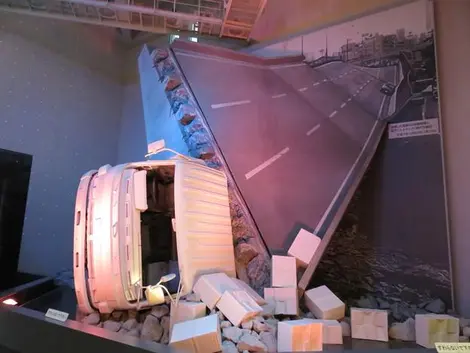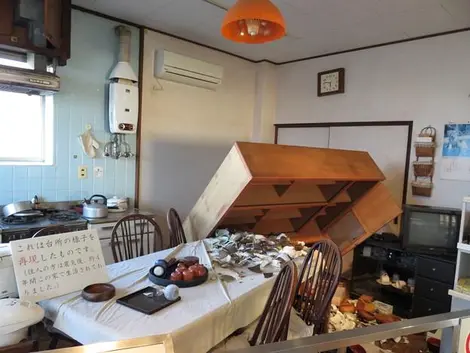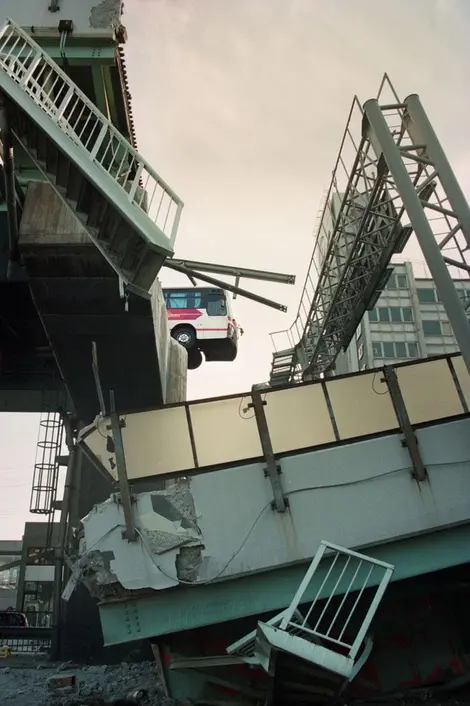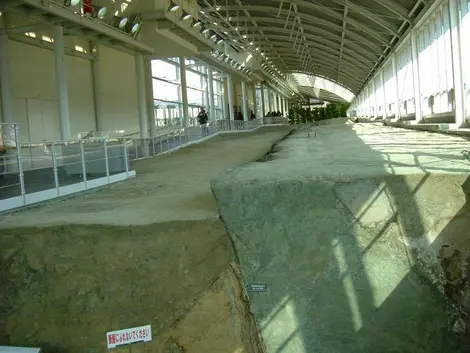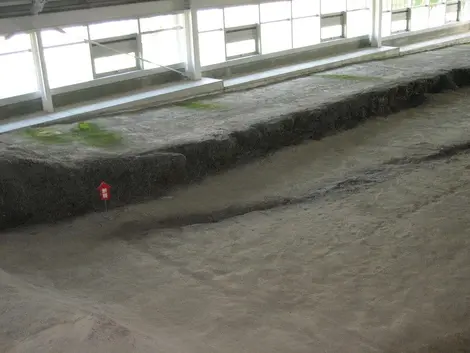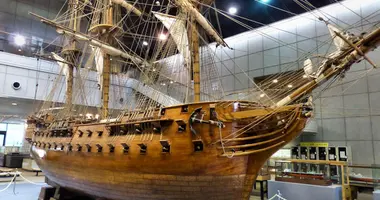Hokudan Earthquake Memorial Park 北淡震災記念公園
- Published on : 16/10/2018
- by : S.V.
- Youtube
preserve memory
In Ogura on Awaji Island, Hokudan Memorial Park is a museum dedicated to the Great Hokudan Earthquake of January 17, 1995, which struck the Kobe area intensely. This place of memory brings together on the same site didactic spaces, vestiges of the disaster as well as a section of the fault of Nojima at the origin of the earthquake.
Recall of facts
On January 17, 1995 at 5:46 a.m., residents of the Kobe area were rushed out of their sleep by a powerful earthquake measuring 6.9 on the Richter scale (7 on the Japanese Shindo scale). . Many old houses with wooden frames and tiled roofs are collapsing on their occupants. In Kobe, the liquefaction of the soil causes the collapse of several bridges and buildings. For days, fires ravaged the sixth largest city in the archipelago .
This region, which until then had been thought to be safe from major seismic risks, is paying a heavy price since the disappearance of more than 6,000 people is deplored. The disaster also left 300,000 residents homeless. Unprepared for the occurrence of major earthquakes, the area is learning the lessons of this sad event and adopting new paraseismic standards . Once the reconstruction is well under way, comes the time for the duty of memory .

Hokudan Earthquake Memorial Park
MTI
The museum
In 1998 , the Hokudan Earthquake Memorial Park (also called the Great Hanshin Awaji Earthquake) opened. It is erected in the district formed by the municipalities of Hokudan and Ogura; the most heavily affected area .
The impressive replica of the collapsed section of National Route 43 welcomes you to the museum lobby. A reconstruction that one might think straight out of a disaster movie but which very quickly recalls reality once the amazement has passed. Nothing is fictional , it all really happened. Many photos of completely devastated places bear witness to the violence that has befallen the region.
A seismic simulation room is set up to experience the tremors of the 1995 earthquake and then that of the Tohoku of March 11, 2011. The session takes place in a typical Japanese home subjected to strong tremors for about 40 seconds. If you want to deepen your scientific culture, an information center , called "the laboratory", also informs about the mechanisms and the causes of an earthquake.
See also: Awaji Island
The Nojima Rift
In the Fault Preservation Building , it is possible to observe a fully preserved section of the Nojima Fault , which was responsible for the earthquake. A cross-section of this makes it possible to understand the overlapping movement of the two blocks of stones along this rupture zone. On the surface, the rugged ground speaks for itself.
A few steps away, a house that miraculously withstood the shaking has been refurbished. The museum offers survivor testimony sessions during meetings with visitors. These take place every Tuesday from 10 a.m. to 12 p.m. and from 2 p.m. to 4 p.m. The kitchen under construction with its overturned furniture sheds new light on the rare power of this earthquake.
The park is home to a terrible vestige: the fire wall of the Nagata district market in Kobe. Preserved and moved to Ogura, this wall is the only remnant of the building. Having become a powerful symbol of drama, visitors often come to meditate there. Beyond the duty of remembrance, the museum manages to make the public aware of the importance of being well prepared for this type of disaster. Of vital importance.
To go further: Ikebukuro Life Safety Learning Center
Address, timetable & access
Address
Phone
0799-82-3020Timetable
10 min by train from Hokudan ICPrice
Adult: 700 yen (5.50 €) Child: 250 yen (2 €)Access
Open daily from 9 a.m. to 5 p.m.Website
http://www.nojima-danso.co.jp/index.html



